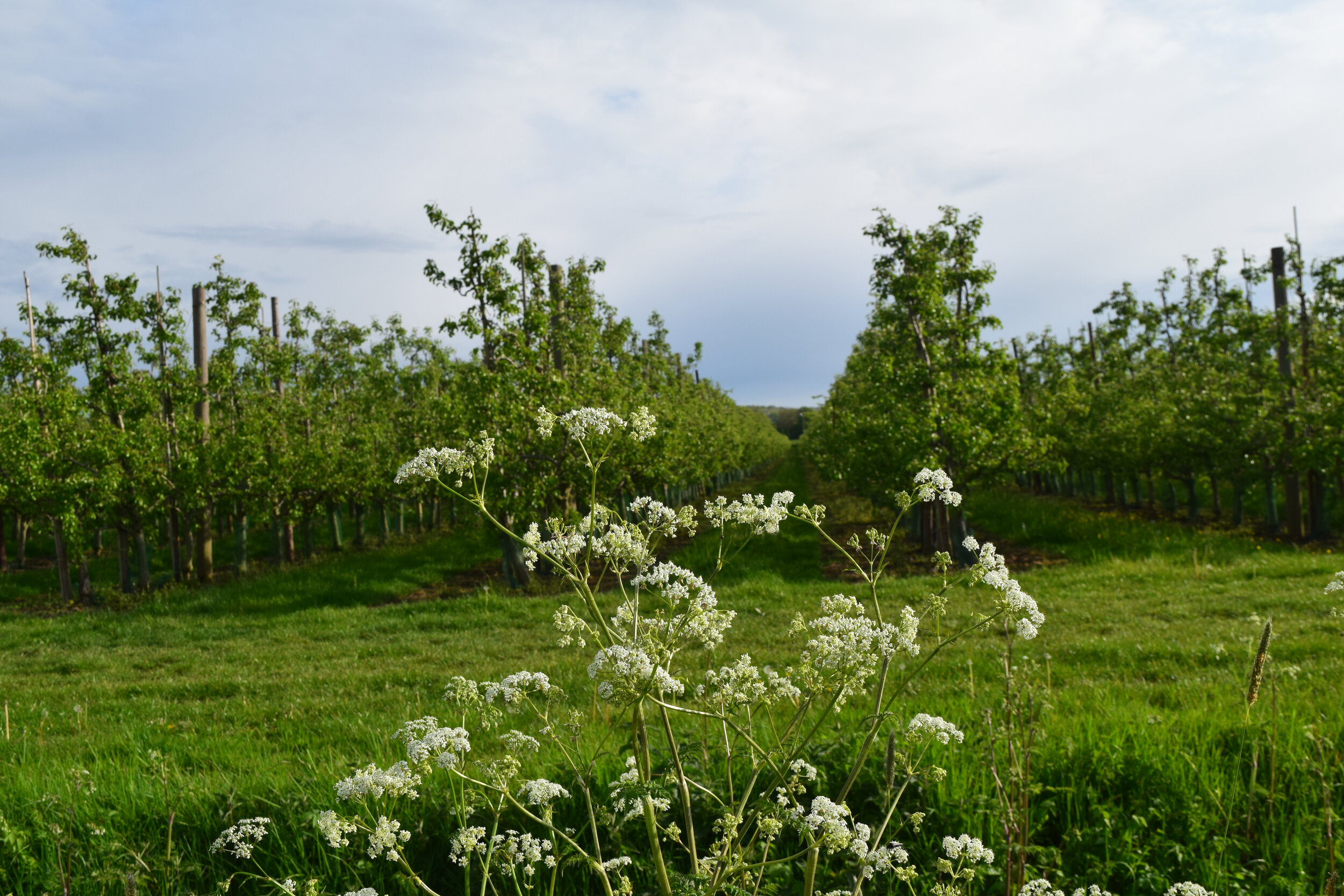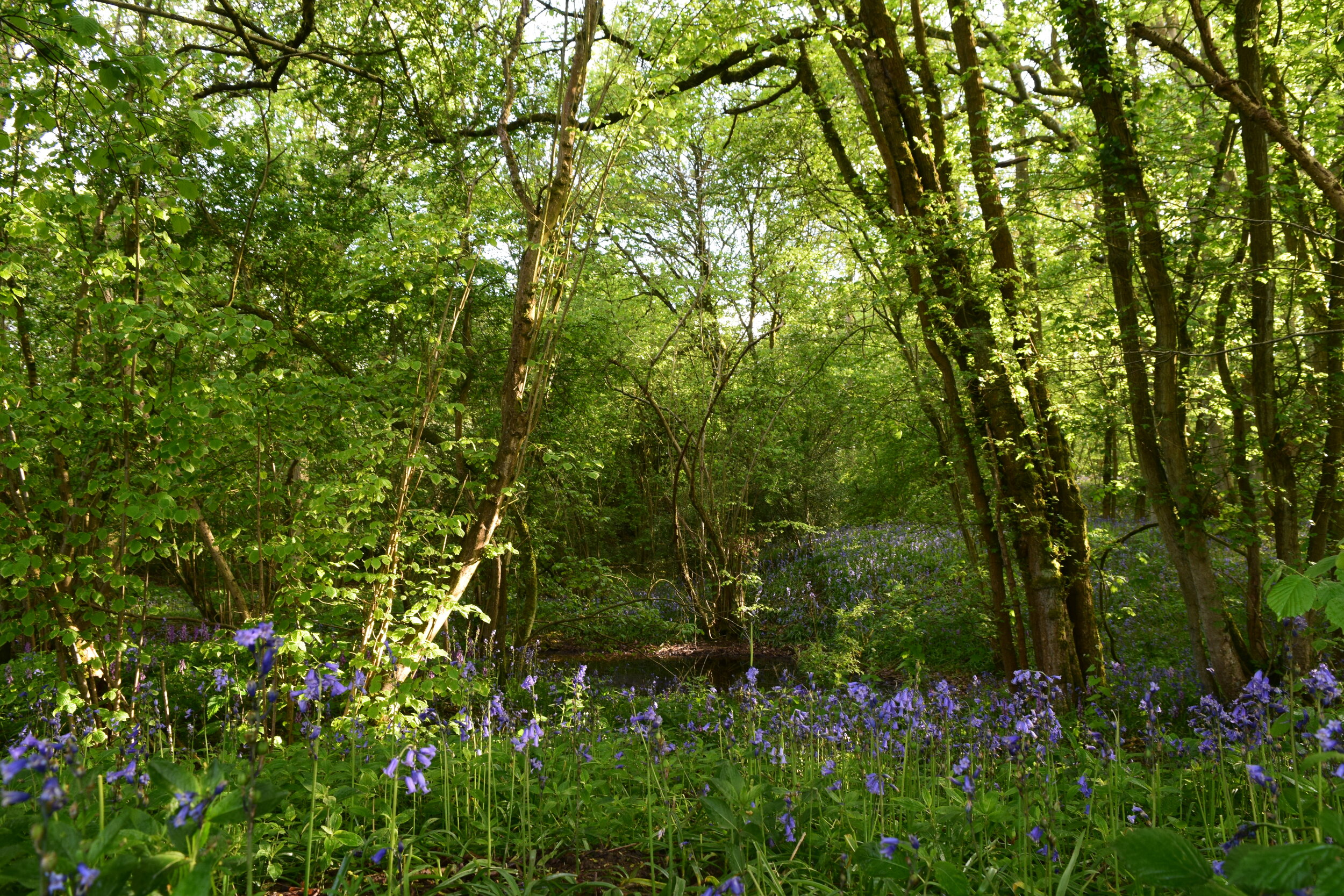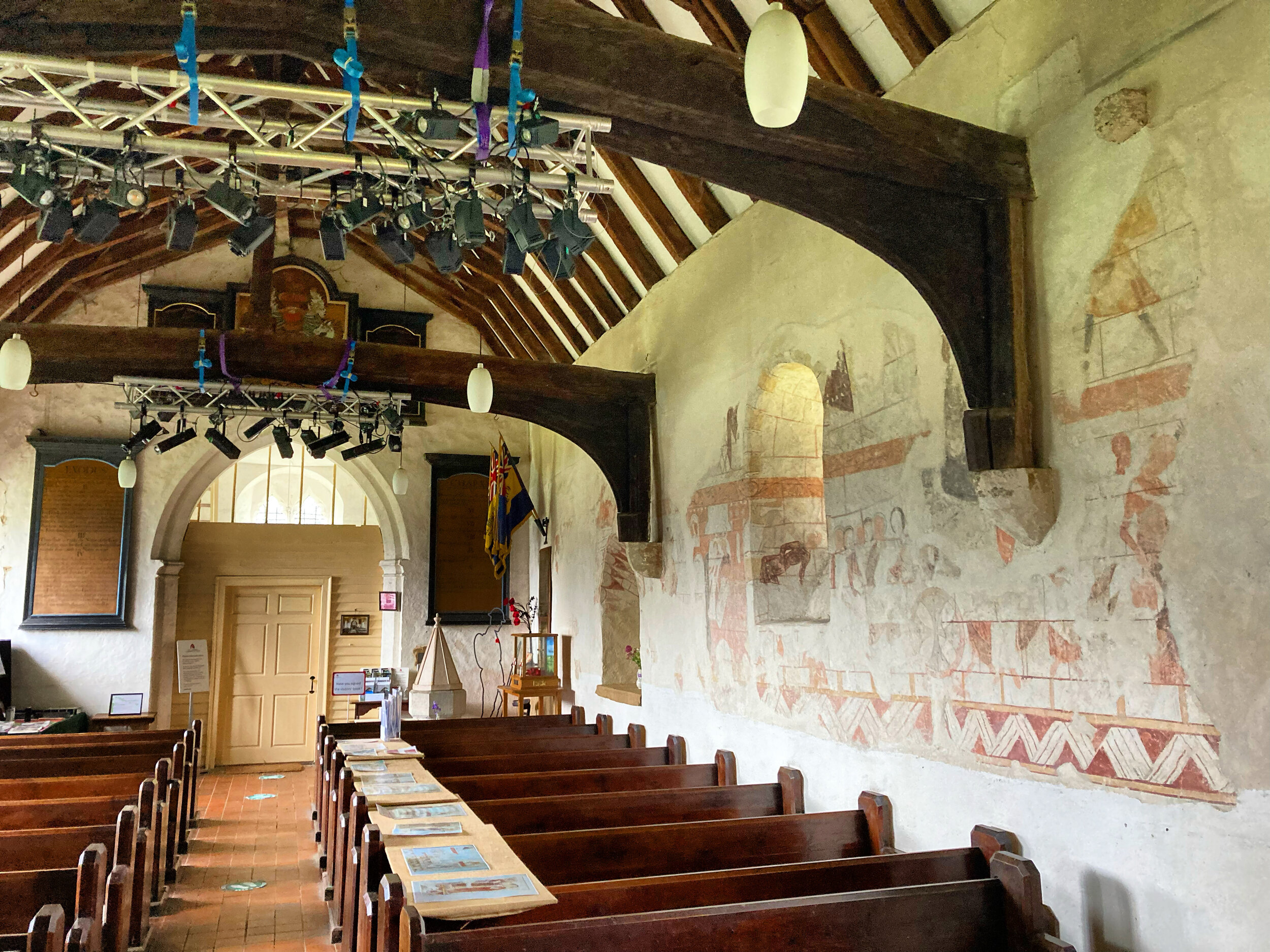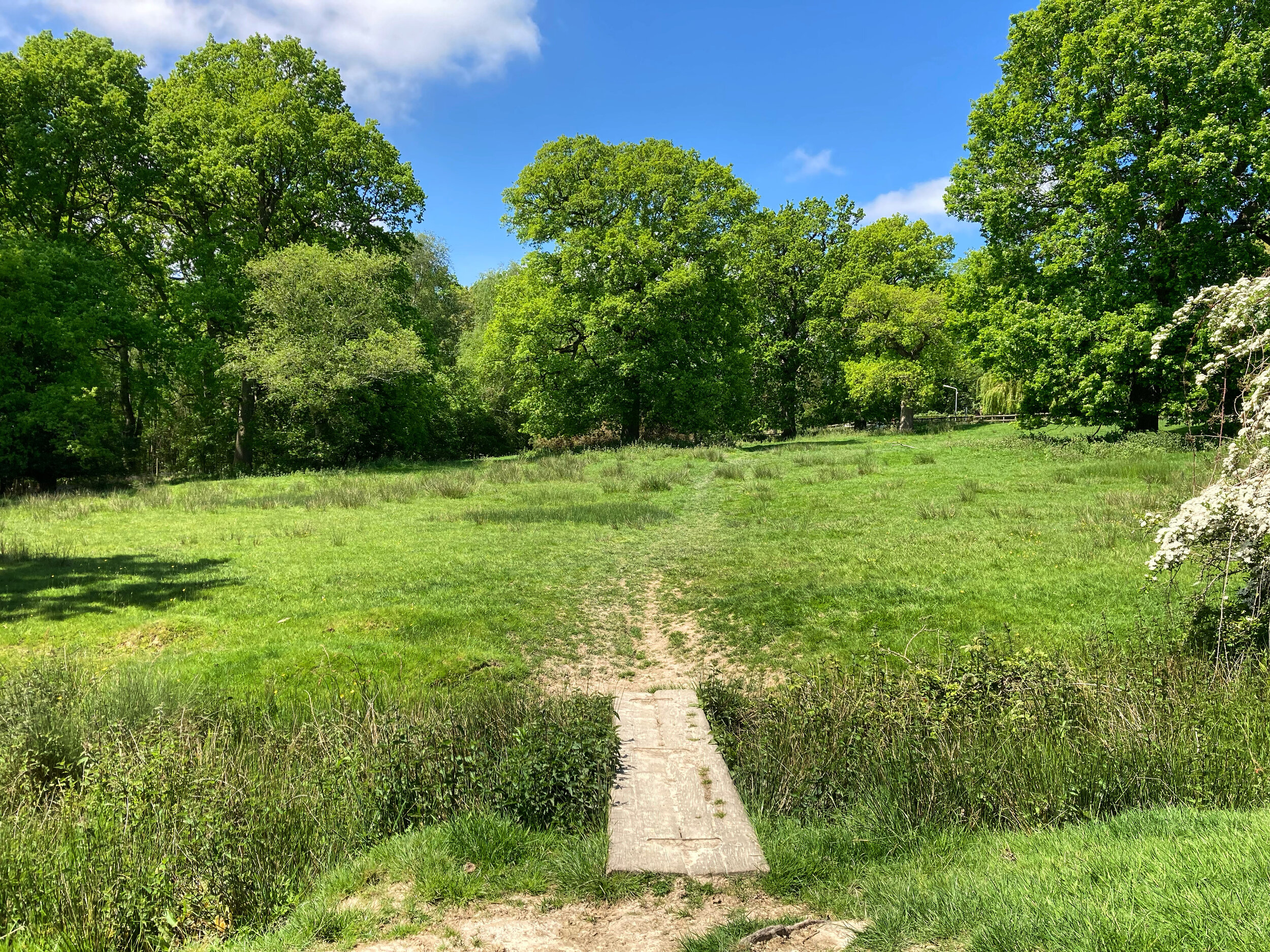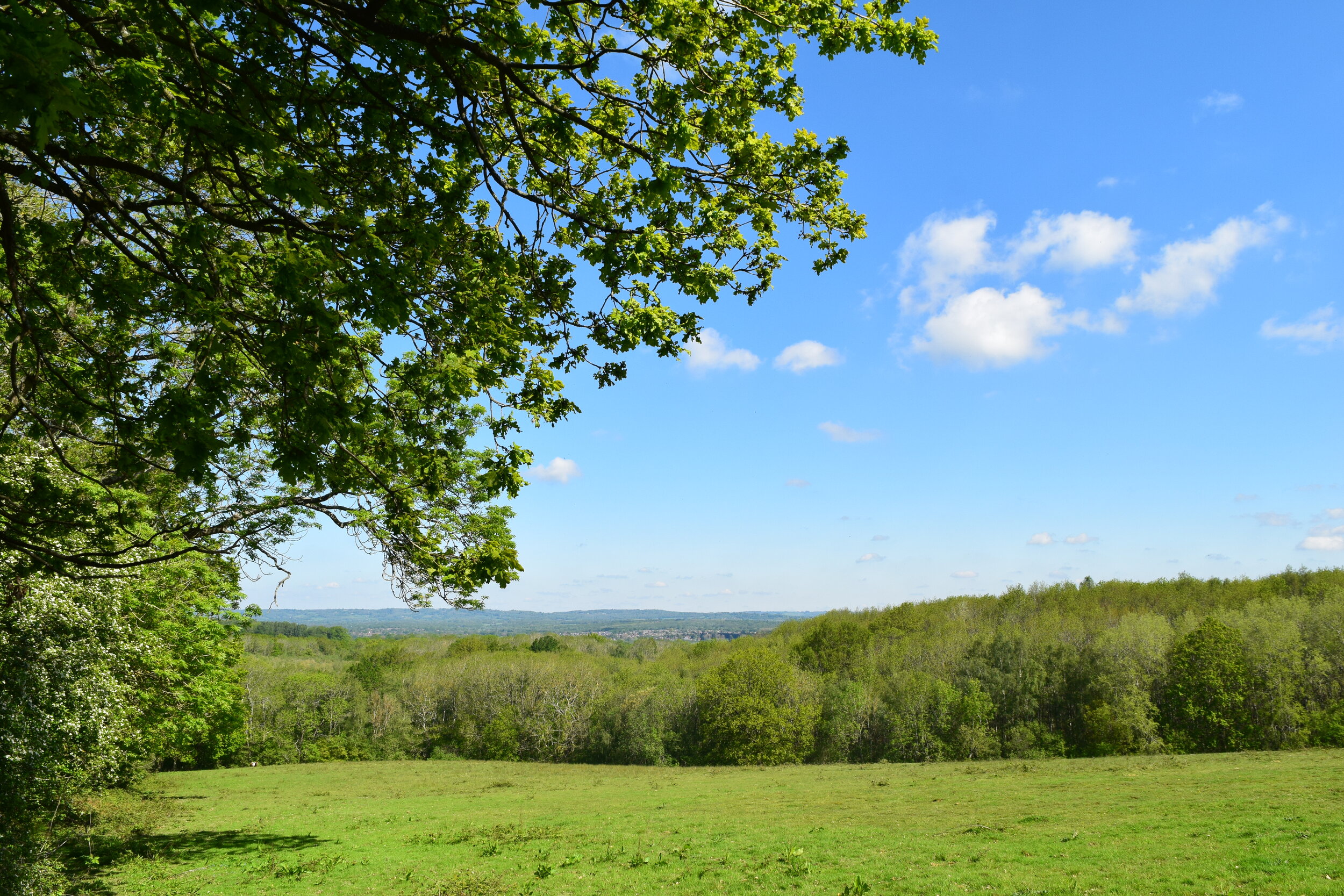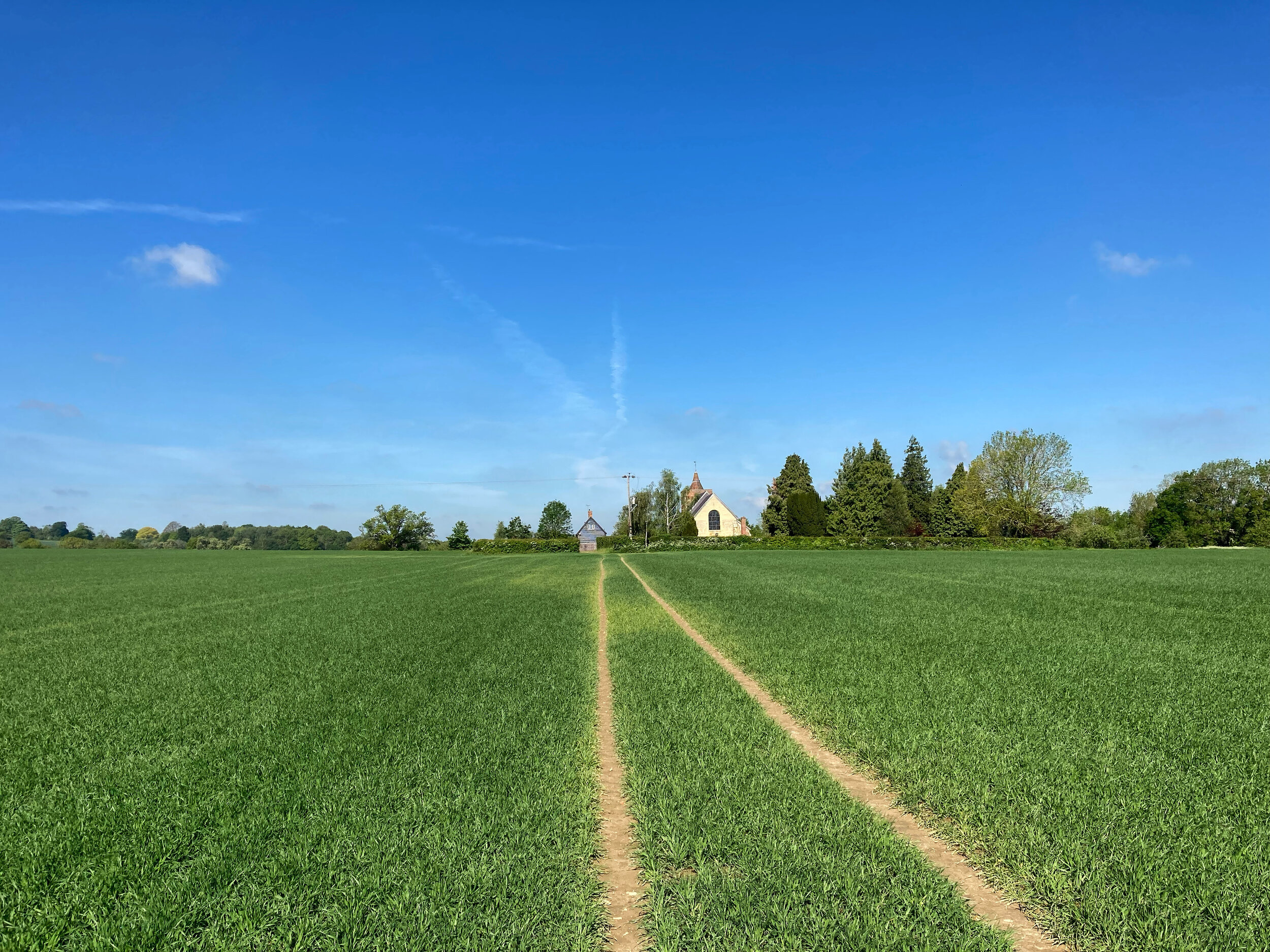Walk 22: The Trinity
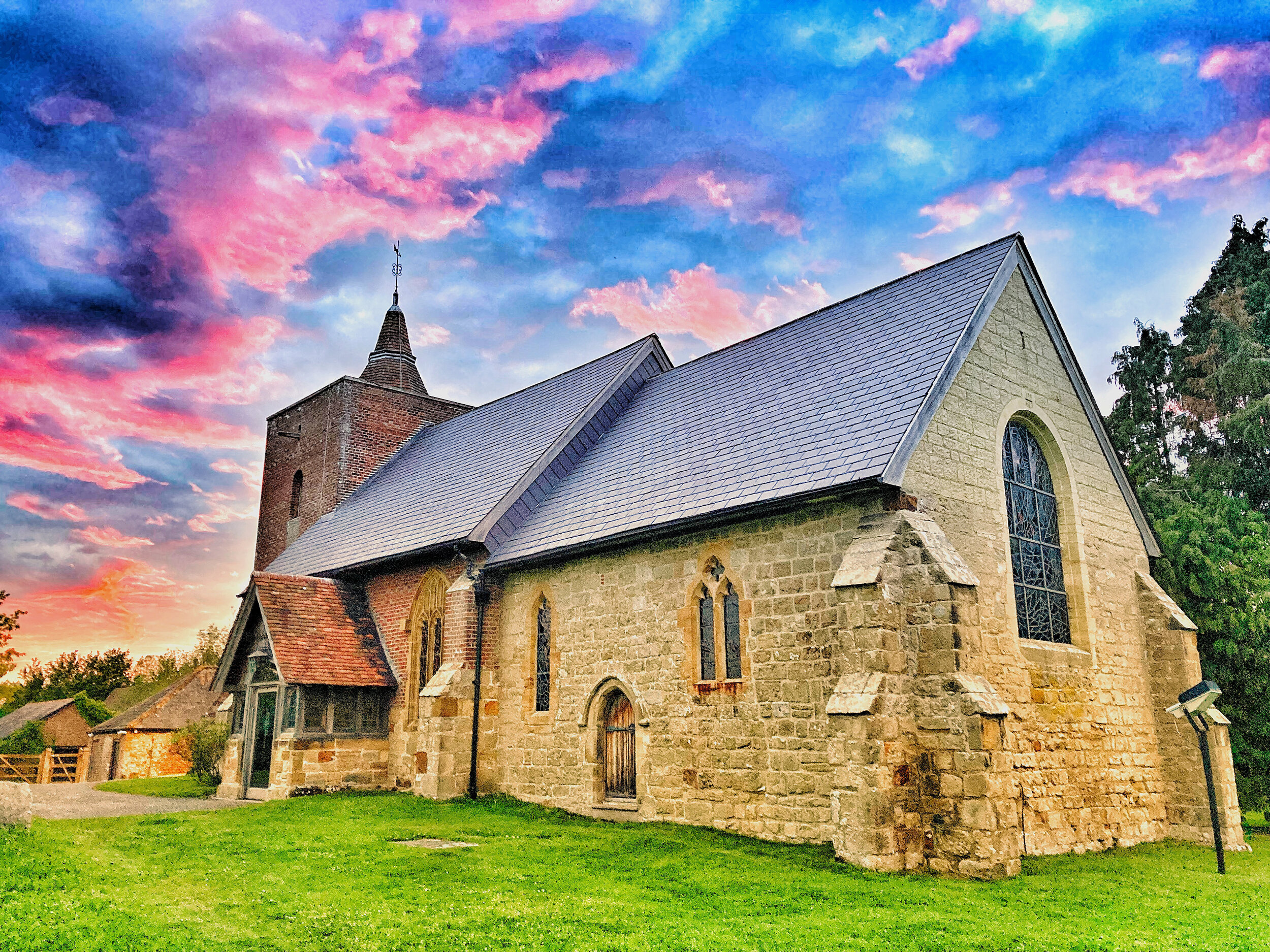

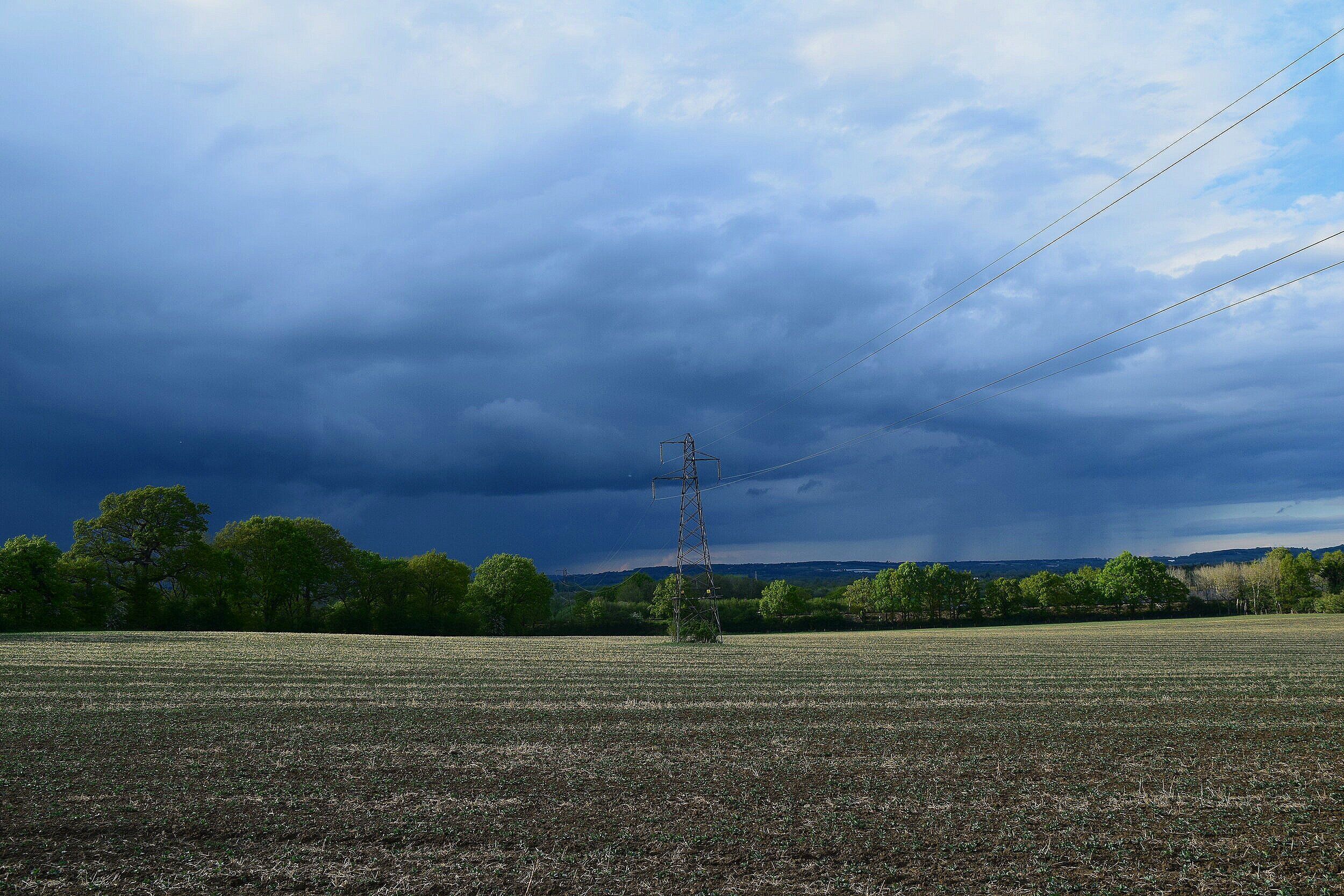

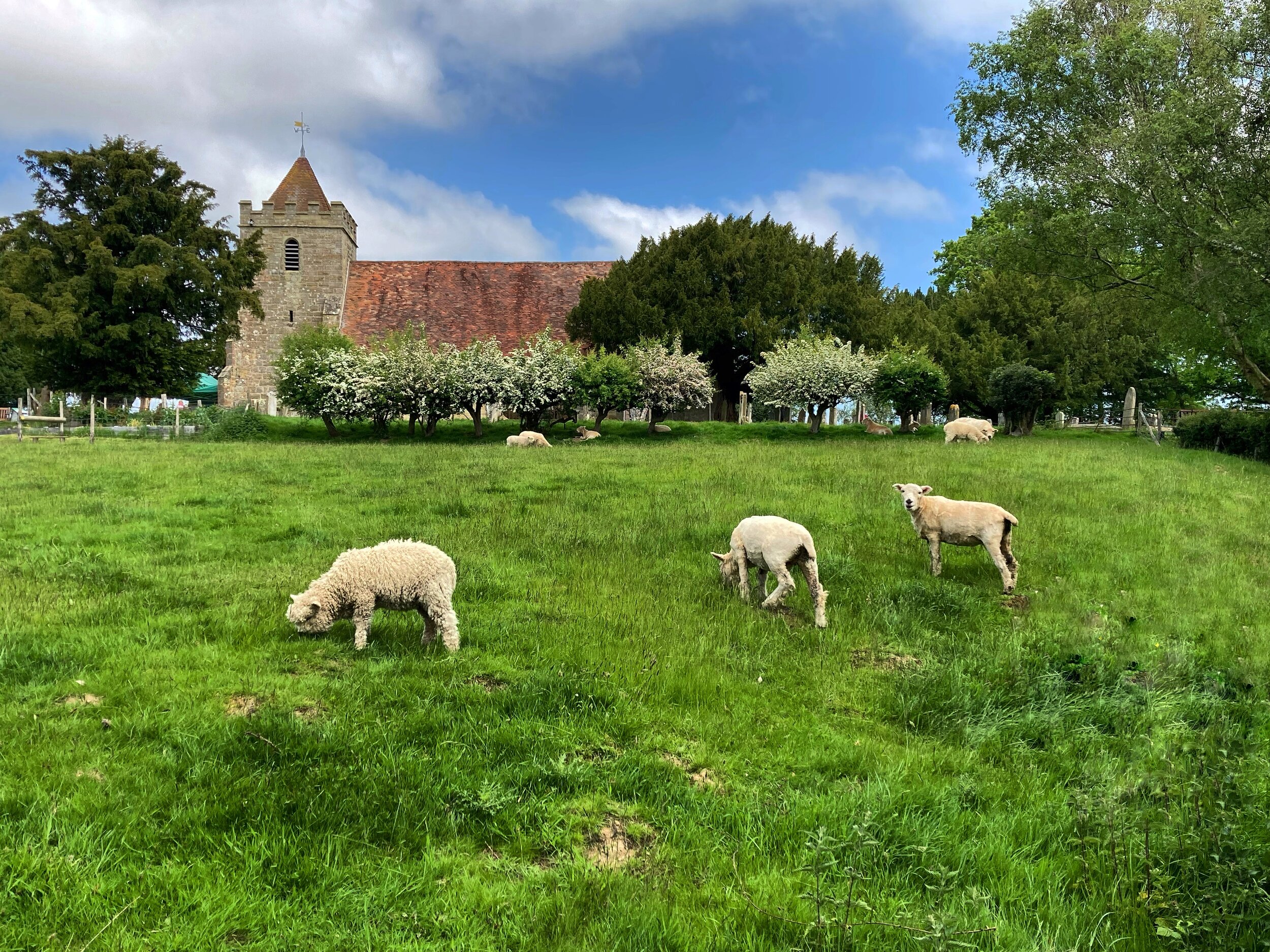
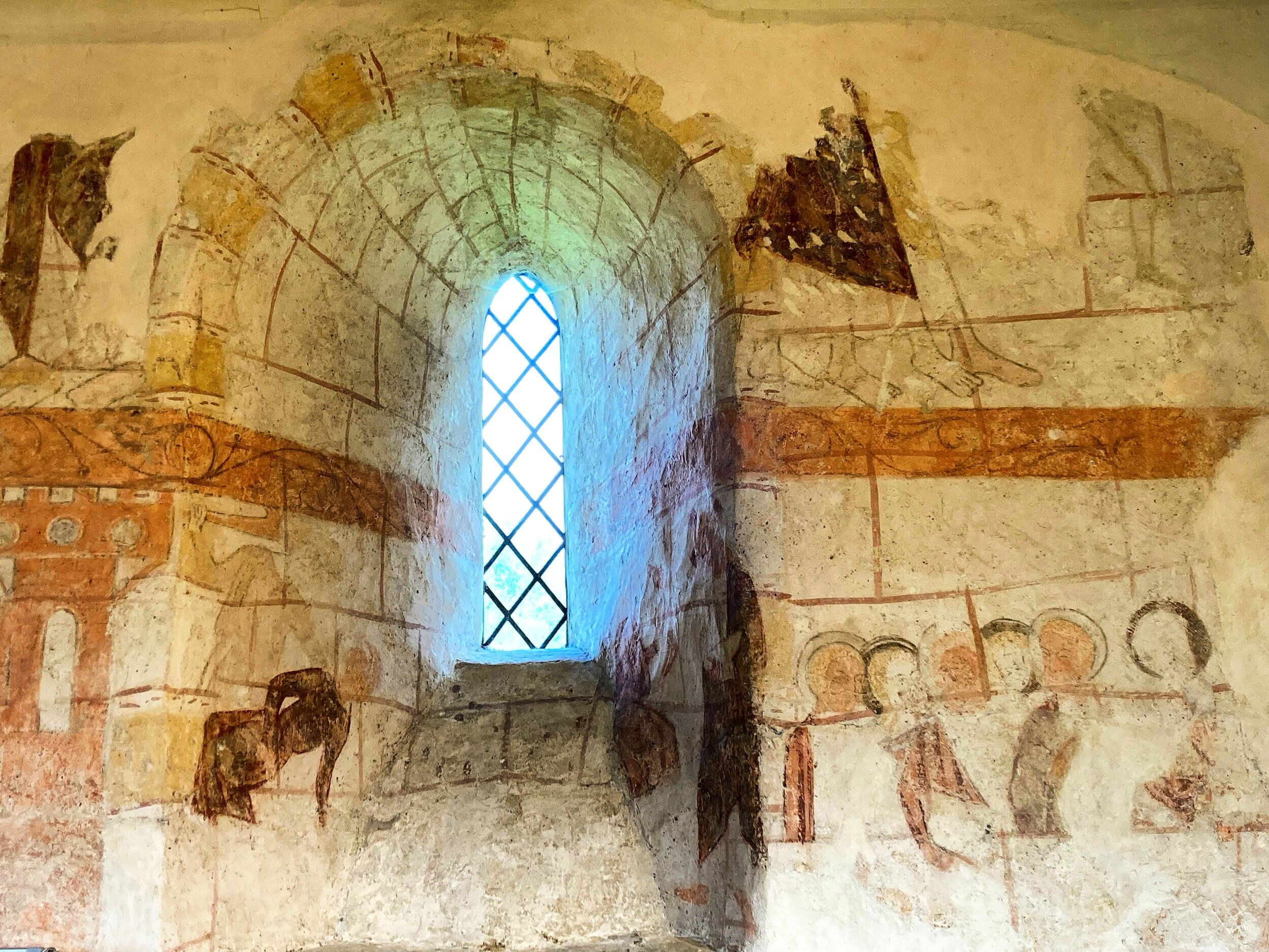
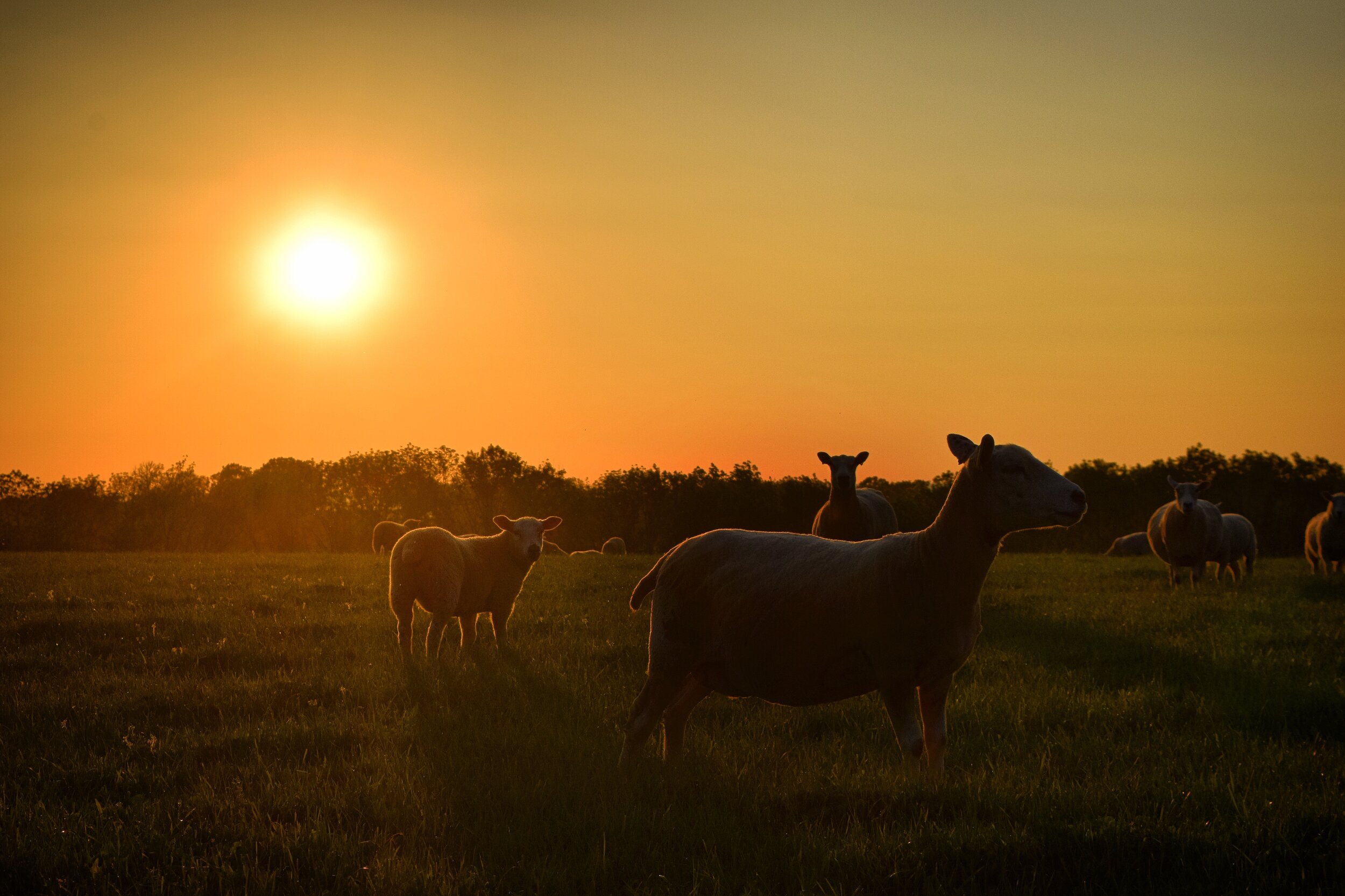
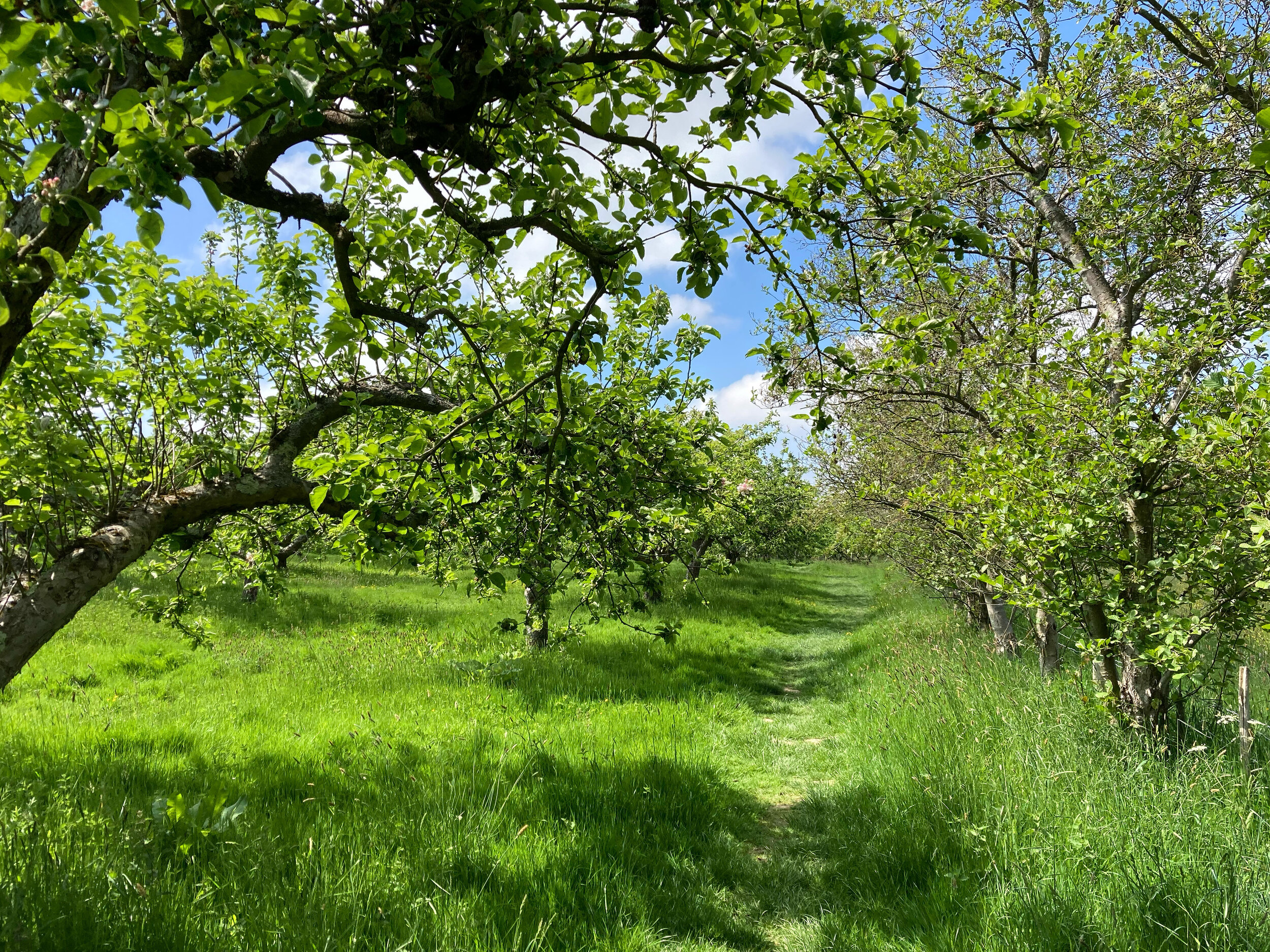

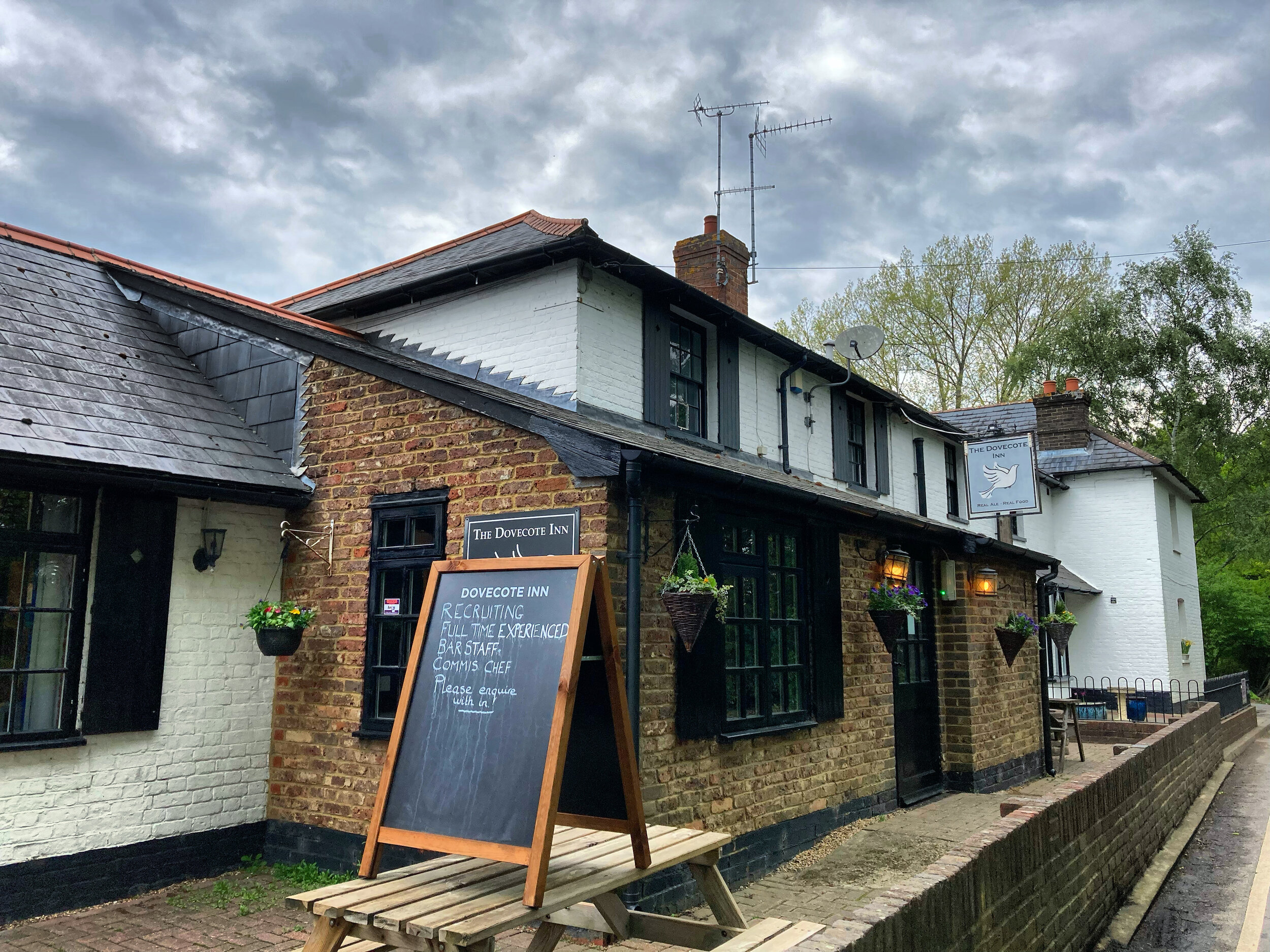
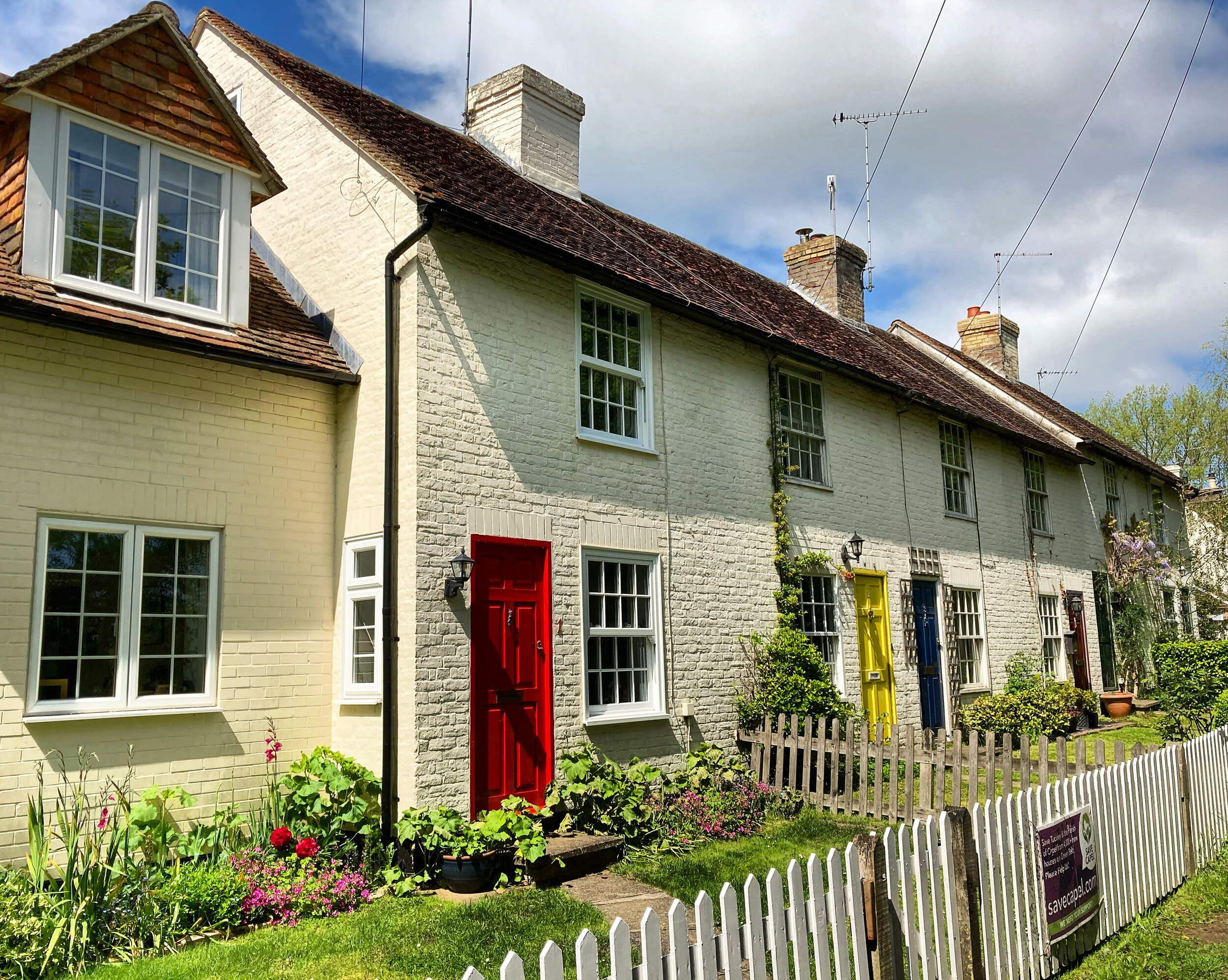
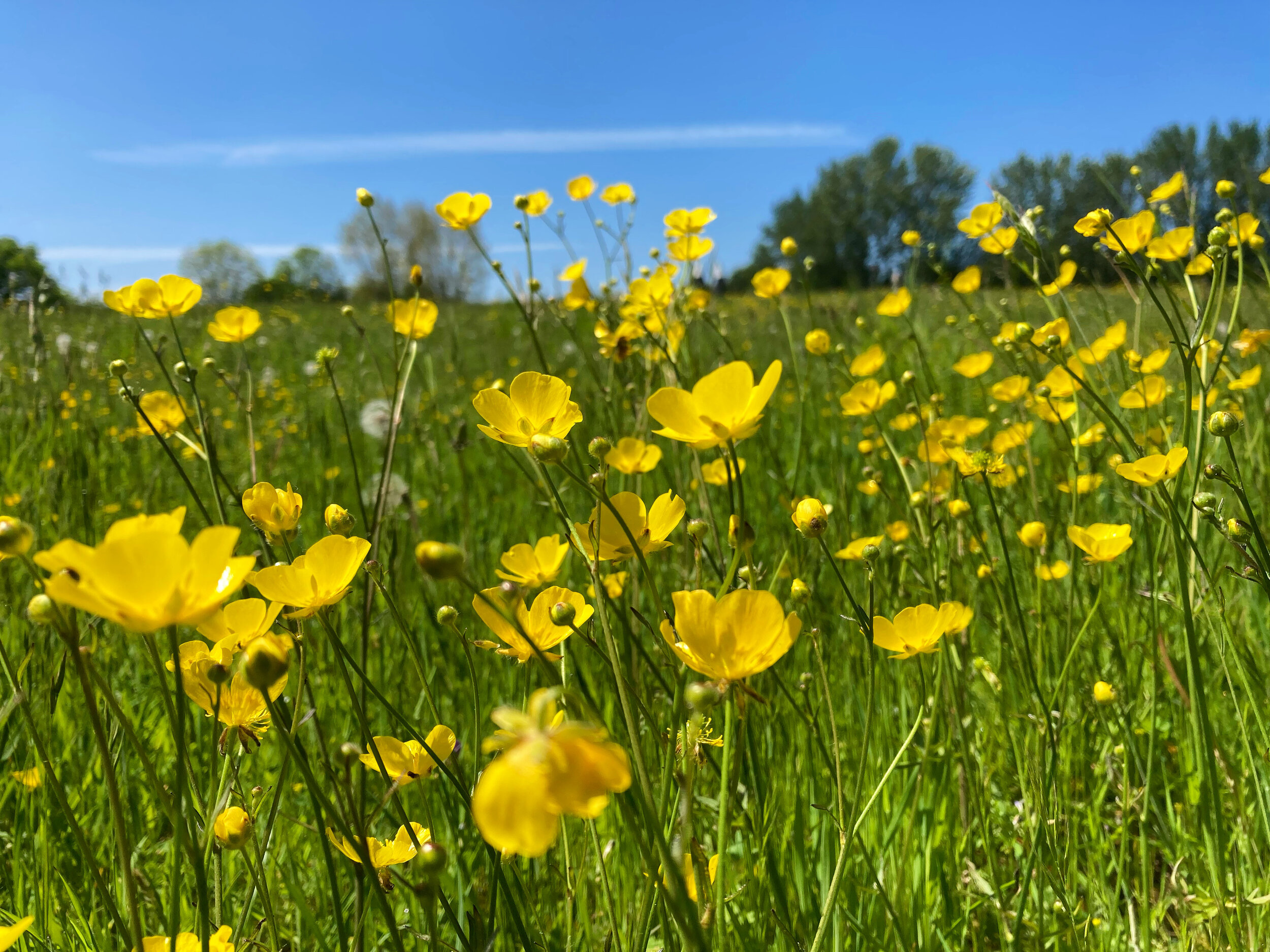

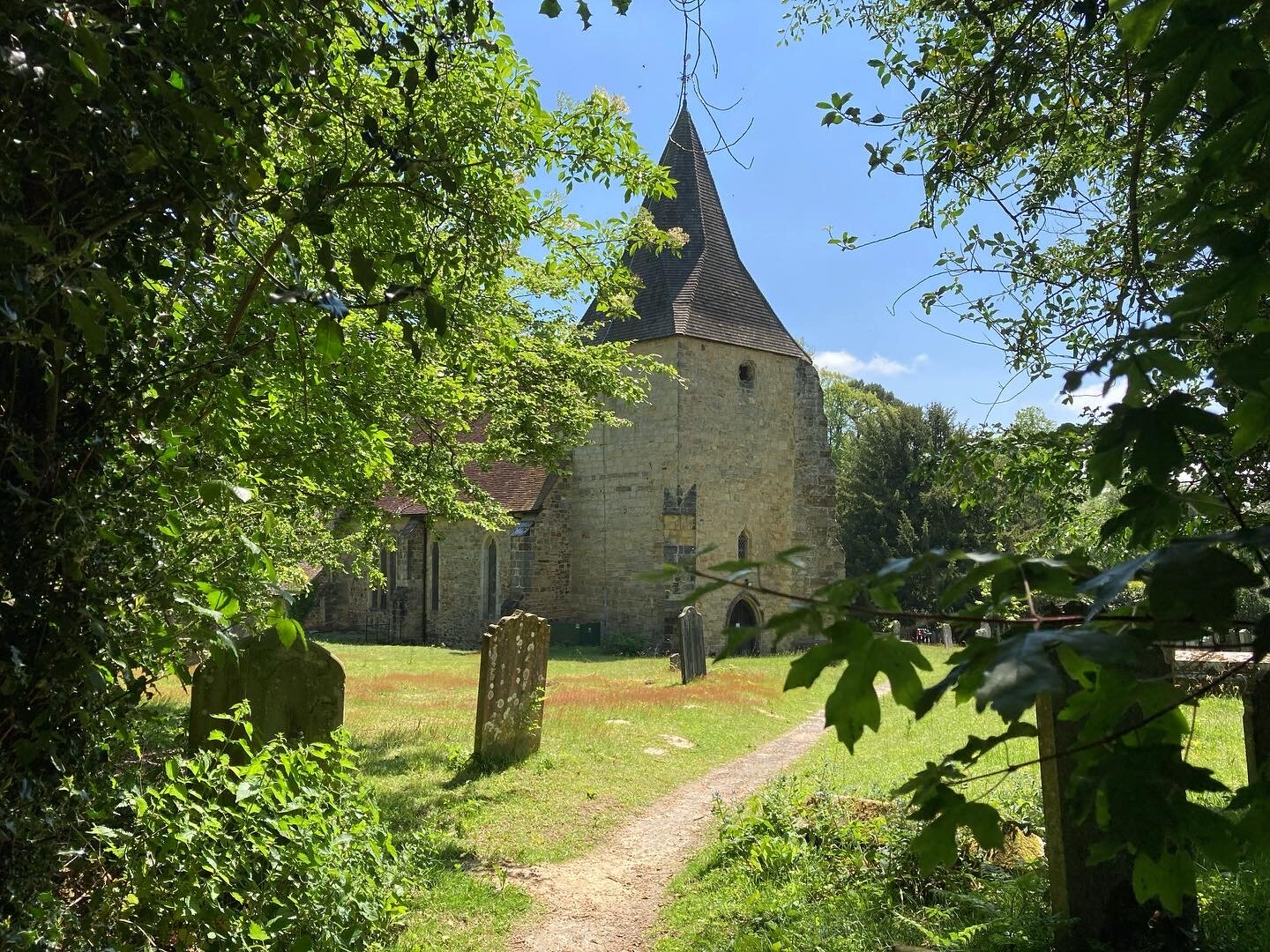
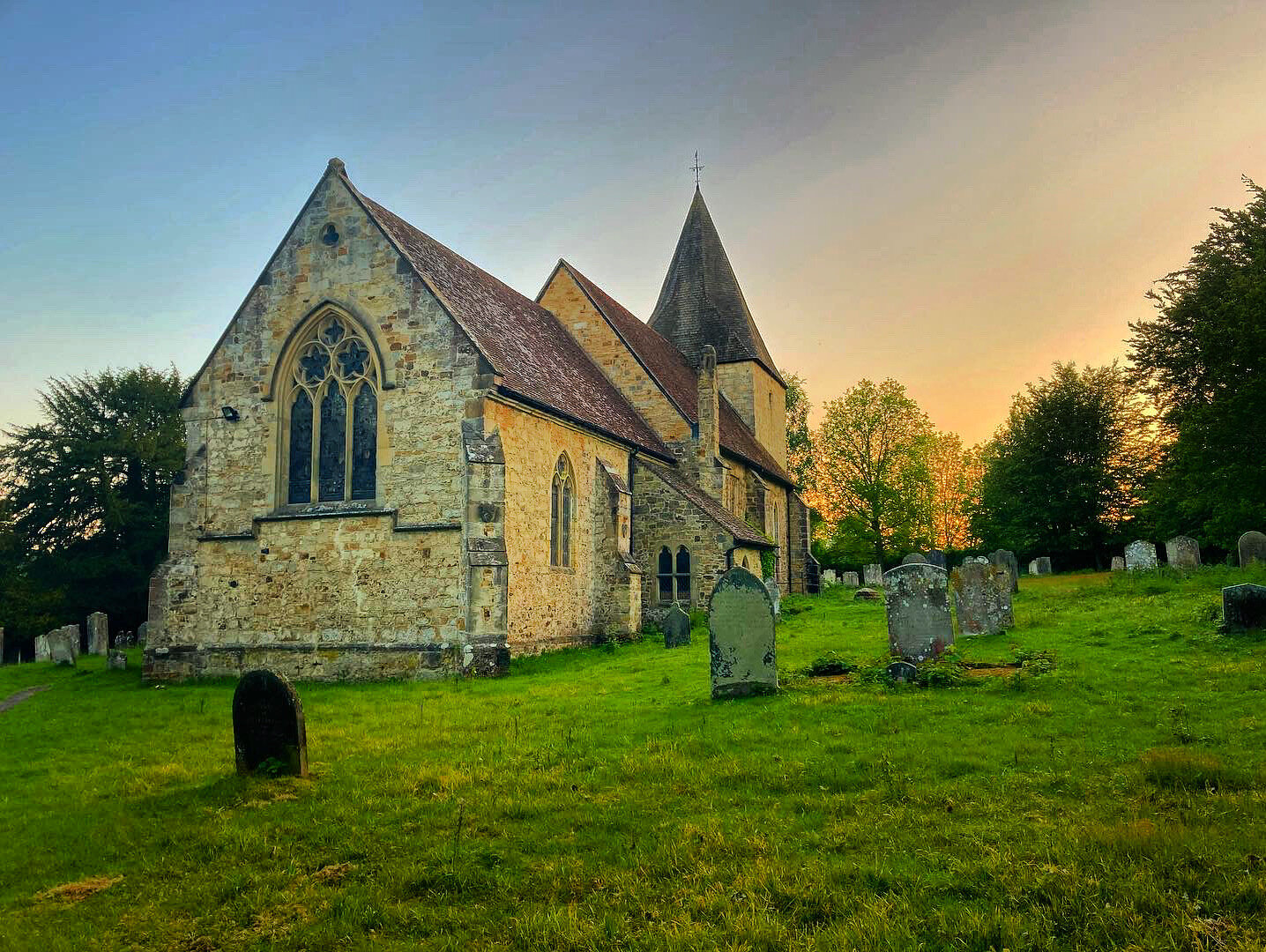
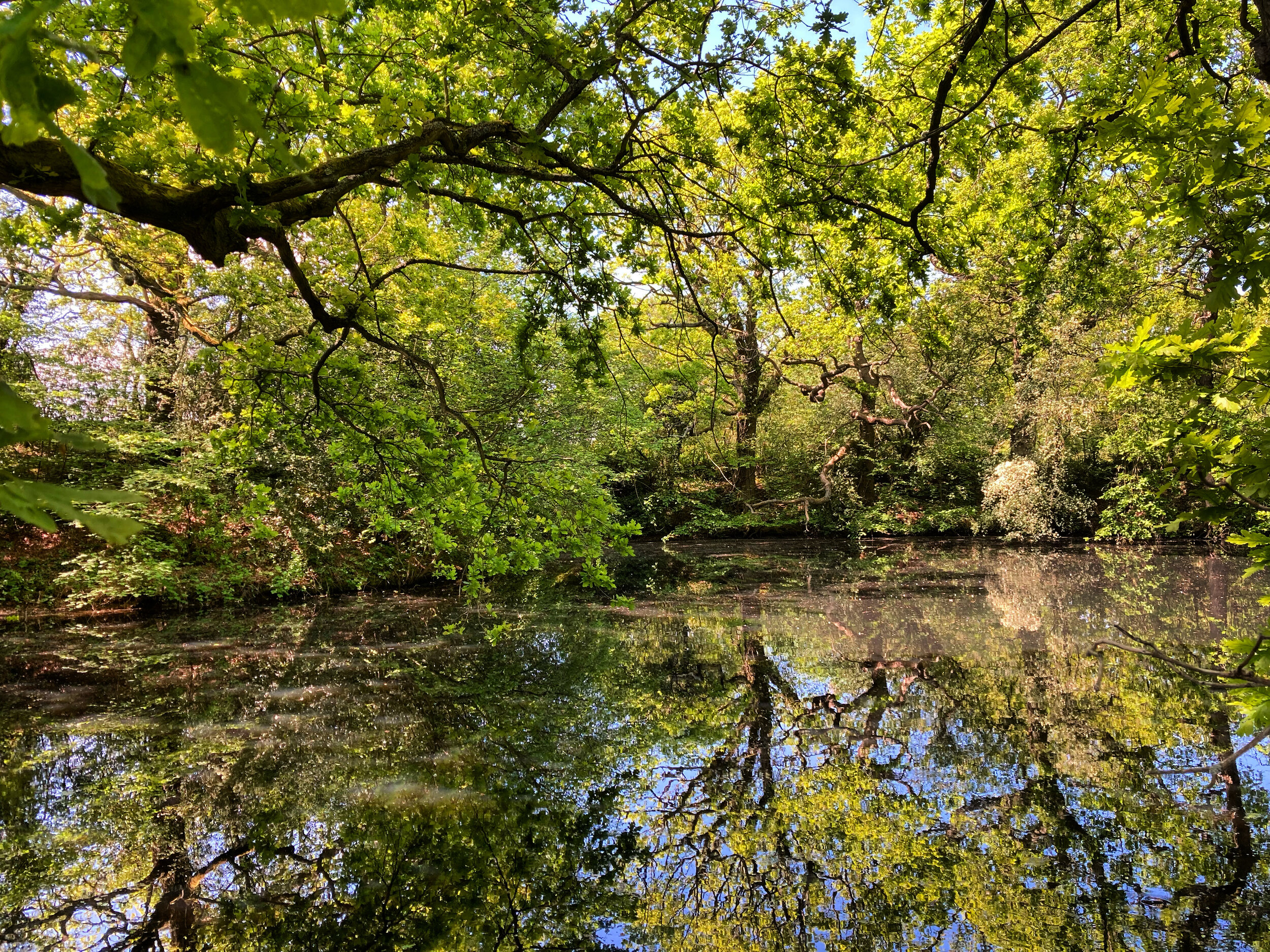
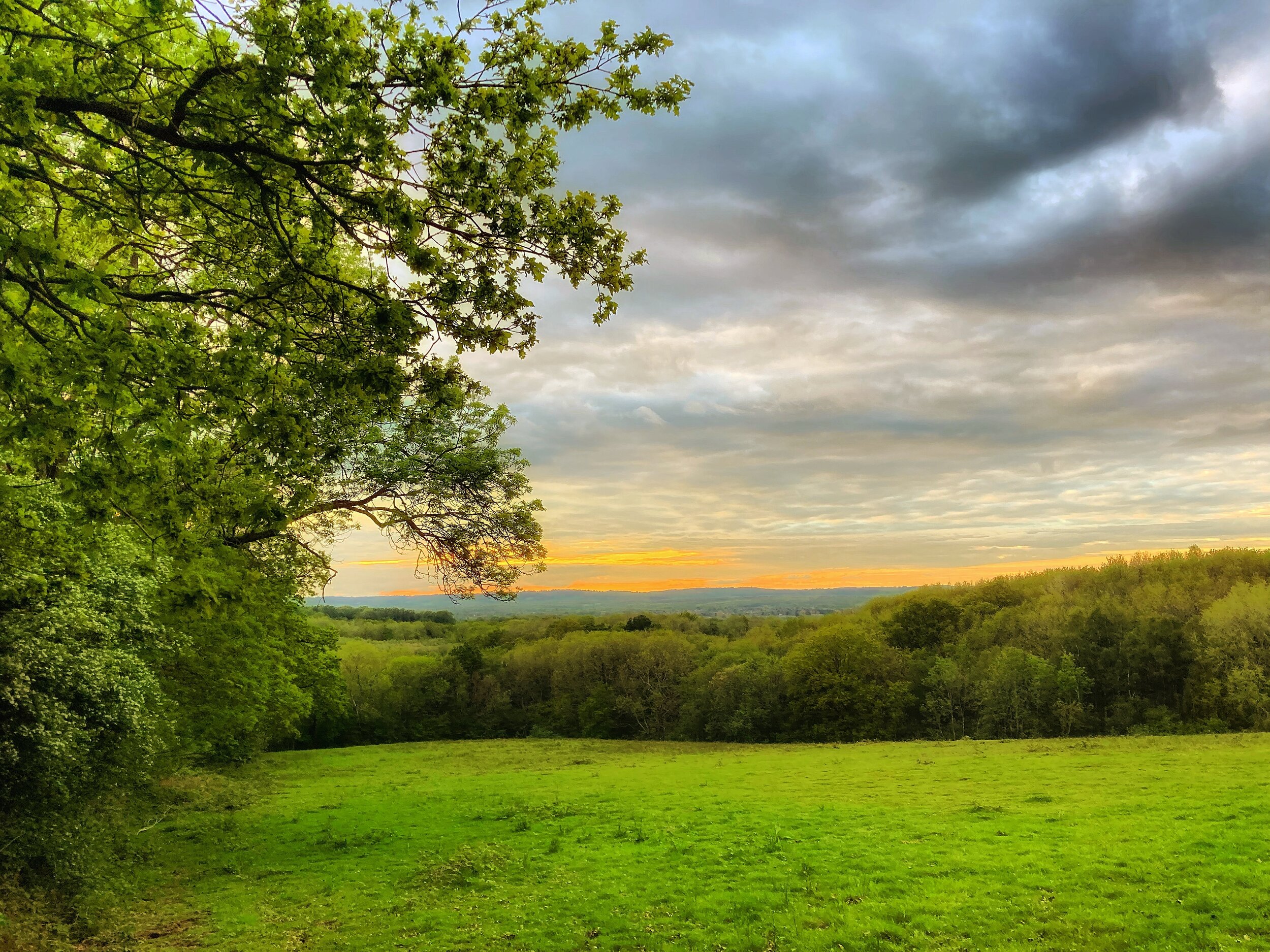

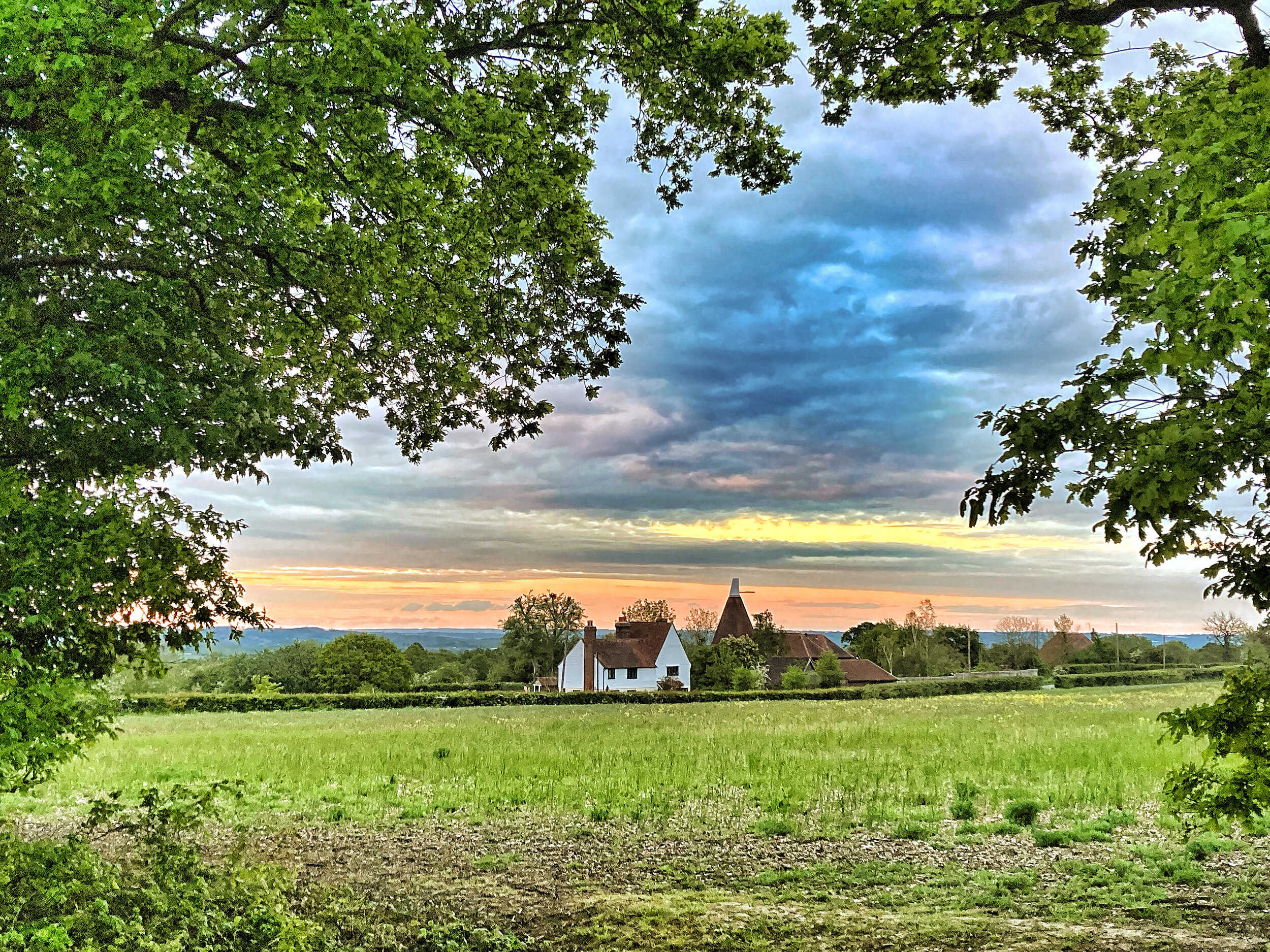
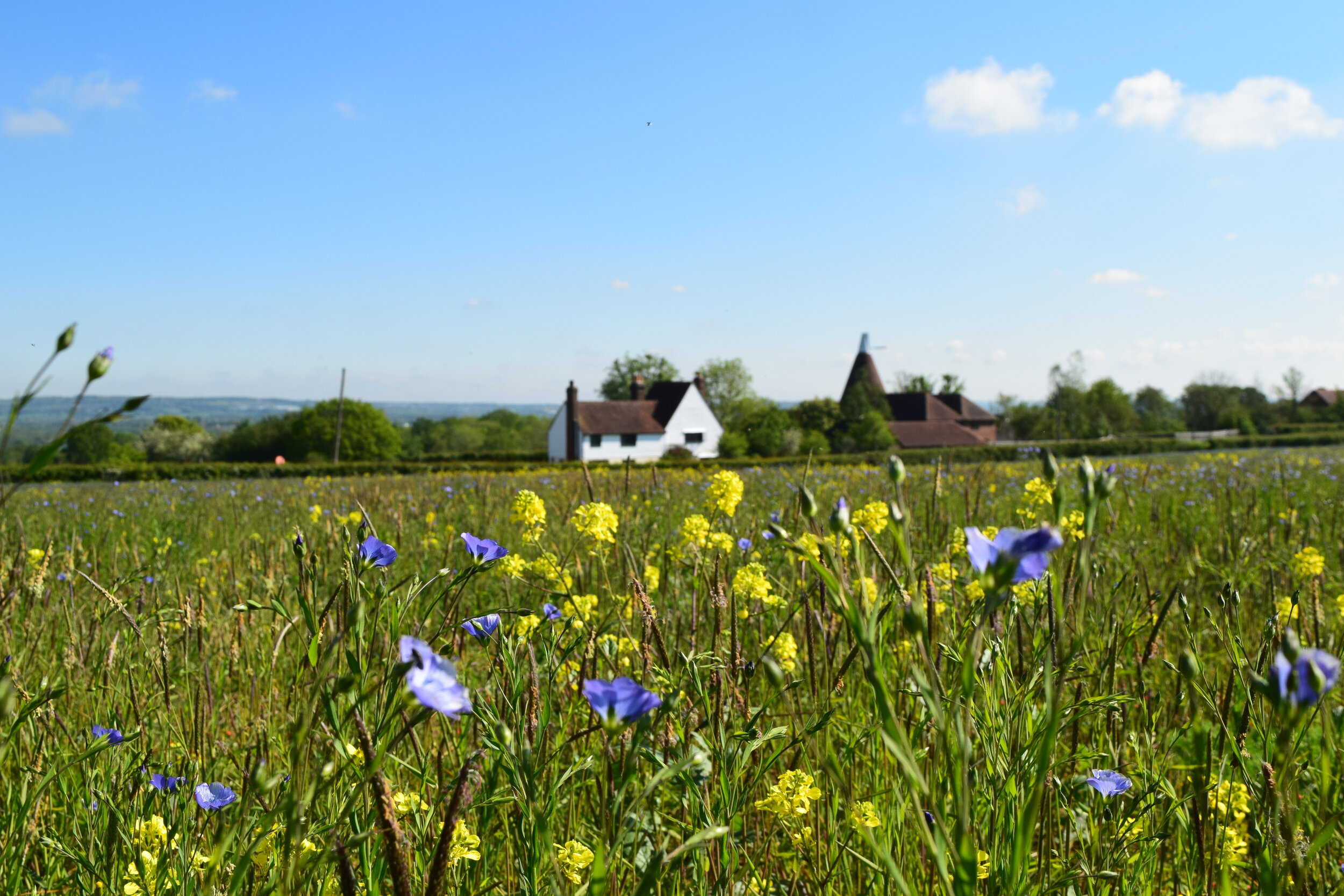


I first started walking to this part of Capel over the winter lockdown. That was back in the dark days when weekends involved a morning walk and the rest of the day cooped up at home. Back then the pubs were closed, the trees were stripped off leaves and the meadows were damp and muddy.
Fast forward six months and Capel is a different place. The woods are green and shady, meadows are flooded with wildflowers and the pub gardens are alive with the sound of chatter and chinking glasses. Even the views are better now that the sky is blue and the sun is out.
Since lockdown eased I have been reminded of just how easy it is to take life's little happiness' for granted. Catching up with friends and family, having someone else do the cooking, or heading out for a day trip are just some of the things I sorely missed in those tough winter months.
The rural calm that Capel offers is more than just one of life's little pleasures, but sadly this doesn't grant it immunity from being taken away. Enjoy this walk now and try not to take it for granted, as this beautiful landscape might not be around forever.
Cow Parsley and Pear Orchards at Sherenden Farm, Tudeley
Upon leaving the Poacher and Partridge, turn right and follow the road with care for 130 metres before taking the first right into Sherenden Road.
As you follow this quiet country lane, you'll pass field upon field of blackcurrant bushes and orchards of pear trees. In Spring the surrounding ditches are overflowing with frothy white cow parsley. The rusty corrugated panels of the big red barn contrast beautifully with the lush greens and vibrant yellows of the surrounding countryside.
The Big Red Barn at Sherenden Farm
When you reach the barn follow the road round to the right. The purple and green wisteria that drapes the cottage on the corner of this quiet lane compliment the posters for 'Save Capel', a campaign movement opposing the construction of several huge developments on the green belt encircling this peaceful part of Kent.
One of these is Tudeley 'new village', part of Tunbridge Wells borough council's local plan, a long term vision to manage the growing demand for housing in the borough. In addition to the 2100 new houses at Tudeley, there would also be schools, shops, workplaces and leisure facilities springing up on this part of the green belt.
Save Capel banners are a common feature in this part of the world…
The development is due to be built on land owned by The Hadlow Estate, a family owned business run by the Teacher family, who you may remember from the conclusion of one of our earlier walks 'The Goldsmid Trail' . The family have owned and nurtured the surrounding landscape for many years, including many of the listed buildings that were first built by their ancestors, the Goldsmid family.
Continue down the lane and then walk under the railway bridge. If the new development goes ahead, this will be roughly where a new station is to be built, adding an additional stop between Paddock Wood and Tonbridge on the South Eastern mainline between London-Dover. It's argued that the train station would alleviate pressure on the neighbouring stations, but it's difficult to envisage the new village not relying on the already strained road network between Tonbridge and Paddock Wood.
Sherenden Road, railway bridge, this could one day be part of a new railway station
Walk on past the row of white cottages and continue uphill. The verges here are crammed with daisies and long grass, swaying lazily in the summer months. This quiet community will be swallowed whole when the bulldozers arrive, eventually replaced with streets and streets of suburban housing.
The Hadlow Estate argue that they have proposed a blueprint which will add warmth and character to the new development. They envision a larger community, based on villages of old. Their plan sells an idyllic dream that includes generous amounts of green spaces, winding lanes and mixture of housing styles, similar to the developments made by the Duchy of Cornwall in The West Country. There's no denying that the Hadlow Estate have put more thought into their plans than an average development, but once this land is taken it can never be reclaimed.
A map of the planned Tudeley development (Pic: Hadlow Estate)
When you reach Bank Farm, turn left and walk through the small metal gate. The paddocks on your left make happy grazing ground for the rabbits which also make this home. In the warmer months they can be seen feasting and playing in the late afternoon sun. These paddocks will be at the centre of the new village, so without wanting to lay it on too thick, this will be another Watership Down if the plans are passed. It's not just the rabbits which will be looking for a new home though, the countryside here is vital habitat for protected species and breeding birds. Newts, badgers, dormice and bats are amongst the protected species that can be found in this area. A biodiversity report by Save Capel estimates that over 70 types of birds can be found in this area during the breeding season.
In fairness to The Hadlow Estate, they have a long history of protecting and supporting wildlife. They work closely with the RSPB at nearby Tudeley Woods and also provide a number of initiatives on their land such as nesting boxes and their annual holiday for over half a million bees which visit their orchards each Spring. Their development plans argue that the new village aims to protect the existing valuable habitats and will improve the biodiversity in some areas - such as these closely cropped paddocks.
Bank Farm, Tudeley
Continue straight on along this track until you come to a wooden kissing gate leading into a large arable field.
Follow the path along the edge of the field for 50 metres, then continue straight as you cut across the crops towards the gap in the hedge. On one of my walks here I bumped into a local gentleman who told me tales of a wartime plane crash, unexploded bombs and one time shooting ranges. It always amazes what you can learn from chatting with the locals!
Bank Farm, Capel
The next chapter for this huge field will be the fourth phase of construction for the new village. Peek through the trees here and you will see murky ponds ringed with bluebells, wild garlic and even a few orchids - their bright purple flowers immediately drawing your eye.
These shady clumps of woodland are scheduled to be protected from the build, but will be left to become bittersweet green islands in a flood of brick and concrete. As you round the pond, turn left and follow the path across the field, enjoying views towards Plaxtol and Roughway Farm. Not even the pylon can detract from these, but it's hard to imagine what it will be like when the secondary school and houses have been built here.
Bluebells near Bank Farm, Capel
Follow the path round a second clump of trees and then as you climb uphill you’ll spot the weatherboard cladding of the George and Dragon in the distance. The path then cuts across the field towards the pub as you gently descend down to Five Oak Green road.
The road marks the edge of the proposed Tudeley new village, but sadly this is just one of the fronts which Save Capel are fighting. To the North they are battling against the proposed extension of the dormant Stone Castle quarry and to the East the mass growth of Paddock Wood.
The quarry plans would see even more countryside dug up, whilst displacing yet more wildlife, destroying the tranquility that you may have experienced during our 'Little Ace' walk. The new town at Paddock wood, would see another 4000 houses built on the green belt, bringing the total number of new residences in the area to over 8000, leaving large swathes of the countryside facing extinction and wiping out the unique rural identity of this proud parish.
Walking across the field to The George & Dragon, near Tudeley
Cross the road carefully and you will find yourself standing outside The George and Dragon, Capel. The pub has recently been given a new lease of life after an extensive refurbishment from its current owners. Whether you are stopping in for a drink, a sandwich or something more filling, you will have plenty of choice.
Just after the George and Dragon, Tudeley you will see a path on your right. Follow this through the woods as it passes a trickling stream. The overhanging trees provide a damp green hideaway where bluebells and wild garlic roam free.
Wild garlic by The George and Dragon path
When you come to a rickety metal gate, make sure any dogs are on a lead and then turn left, before walking uphill through the sheep field. In the distance you will be able to spy the steeple of Capel Church, the first of three churches on this walk.
Turn right and then at the end of the hedge cut diagonally across the field towards the church. Look back here and you can see right the way across the Medway valley to the tips of the North Downs.
Walking through the sheep field towards Capel Church
High up on a hill and surrounded by little more than fields and orchards, you can't help but wonder why the Normans decided to build a church here. It's thought though that the church was originally built as a chapel of ease to Tudeley. As dwellers began to settle near the new place of worship, the area became known as Chapel which laterly evolved to 'Capel'.
When you reach the stile, climb over and this will lead you into the church yard of Capel church or to use its formal name St Thomas A' Becket Capel. This small but perfectly formed church was re-named after the martyr that is said to have once preached here, in the shade of an ancient yew tree.
St Thomas a Beckett church, Capel
In case you need a quick recap Thomas Becket, was a second generation immigrant born to wealthy Norman parents in London. He studied within the church and then went on to serve King Henry II as Lord Chancellor (at the time this was pretty much the second most powerful job in England).
When Tom was offered the position of Archbishop of Canterbury, he jumped at the chance and quit as Lord Chancellor. His former boss and once close friend, King Henry wasn't impressed, particularly when the newly crowned Archbishop began siding with the church rather than the monarchy.
A statue in Capel churchyard
After a series of disagreements the king declared Beckett a traitor and hauled him before the courts. Beckett panicked, fled the dock and then went on the run to the motherland, where he spent the next six years exiled in France. The feud simmered on as a game of cat and mouse ensued, until the pope intervened and the former friends reached an uneasy truce.
Thomas came home to England, but things escalated quickly as the old power struggle flared up once more. King Henry snubbed the Archbishop by holding a coronation for his son and heir apparent at York cathedral instead of Canterbury (the then traditional location for coronations), to which Beckett responded by pulling rank and excommunicating the Bishop of York and two other Bishops that had overseen the ceremony.
A craft fair at Capel Church
King Henry lost his cool and made the mistake of thinking aloud, asking "will no one rid me of this turbulent priest?" His band of overzealous knights took his words literally and before the Archbishop could scream blue murder he was hacked to death at Canterbury Cathedral, redecorating the stone floors with claret and grey matter.
Word of Becketts assassination spread fast, and sent shockwaves across Europe. Having died in the name of the church, whilst standing up to the power of the monarchy, he became a cult hero and was rapidly made a saint. From then onwards pilgrims travelled from all over the country and Europe to visit his shrine that had been erected at Canterbury. Although the church is on the other side of the valley to The Pilgrims Way, it's thought that some of the pilgrims would have passed through Capel en-route, hence the church was renamed St Thomas a Beckett in honour of its one time preacher.
The yew tree which Thomas Beckett is said to have preached under
These days the only sign of life under the shady yew trees are the graveyards resident sheep, but there's another story here that you'll find inside the walls of this old chapel. If you redecorated over lockdown and found some particularly old wallpaper, curled up and wilting behind a radiator, or perhaps a shocking shade of paint under years of old lining paper then you'll probably relate to this amazing tale.
In 1927 the church was undergoing a restoration. Whilst stripping back the thick layers of white washed plaster, the builders inadvertently uncovered the 800 year old medieval wall paintings which cover the North wall of the church. The romanesque art features classic scenes from the bible, such as the last supper and Cain and Abel's sibling rivalry. These paintings were carefully restored by a gentleman called Professor Ernest Tristram who dated the art work to between 1200-1250.
These medieval paintings were discovered after being hidden for hundreds of years
Paintings like this were a standard feature in nearly all medieval churches, as at the time only the wealthiest people were literate. The daubings brought the religious teachings to life and helped spread the word of the bible and reinforce teachings to those that could not read. It's thought that these were plastered over during the reformation - a revolutionary period which saw churches stripped off their art and replaced with bibles and printed texts.
Capel church was made redundant in 1986, but thanks to the care and support of the Churches Conservation Trust it remains preserved and open to visitors. Although it does not host regular worship, it continues to be a consecrated building, so special services can and do still take place here, along with occasional craft fairs and other community events. If you would like to learn a bit more about the church then click here.
Some of the medieval wall paintings at Capel Church
Upon leaving the church, continue through the church yard, following the path under the famous yew tree and out of the gate onto the Church Lane.
Turn right and continue along the road until you reach the junction, then turn left onto Alders Road and then follow this with care for 650 metres.
You'll pass a number of old farms along the way, as well as a beautiful oast house and a picturesque duck pond.
Before long you will reach a tiny hamlet of terraced cottages. Fellow postbox aficionados will be excited to see a lesser spotted Victorian era postbox (for more postbox geekery check out our Tonbridge history walk 'Finding Gandhi'), whereas as everyone will be pleased to see the Dovecote Inn, a superb little country pub that can be found at the end of the row.
Much like the church, The Dovecote Inn is one of Capel's best kept secrets. This cosy little pub offers good food and most importantly a warm welcome. It's recently been reunited with its former owners, who spent the most recent lockdown refurbishing the pub. I don't believe they found any medieval wall paintings during the decorations, but it's looking great all the same!
The Dovecote, Capel
Upon leaving the Dovecote Inn, turn right and continue along Alders Road. Walk past another row of cottages, with their colourful cottages and then climb the stile on your right.
Walk through the field and then just before the fence, turn to the left, heading towards the trees. There are sometimes sheep grazing here, so please make sure any dogs are on their leads.
Come Spring bright green bracken unfurls beneath the shady canopy of the canopy of the oak trees. The bluebells also thrive in this moist shade, sprinkling the flood of green with a tinge of purple.
When you reach a fork in the path, take the route to your right, leading through a small metal gate and into an apple orchard. Turn right and then follow the path alongside the fence before continuing straight ahead. At the end of the orchard turn left and then go through a small metal gate leading into a field. At this point head diagonally right for approximately 100 metres and then go through another small gate.
Walking through the apple trees, Capel
Cross over the road and then walk up the driveway and into another orchard. At this point continue uphill and round to the right following the yellow markers into the trees and past the pond.
Go through the makeshift gate and then continue straight across the top of the field for 70 metres keeping the hedge and the orchard beyond this to your left.
Panoramic views across the valley
Look to your right and you will enjoy a panoramic view across the valley. You’ll be able to spot the ornately gothic Hadlow Tower rising up above the fields of Capel.
Go through the next metal gate and you will emerge into another orchard. These stubby apple trees block the view somewhat but will compensate you with clouds of pinky white blossom in the Spring.
Apple blossom
When you come to the fence, duck under the branches and continue straight on, there will be an electricity pylon on your right.
At the end of this path climb the stile and continue into the next orchard. The more observant walker will notice the change in crop, as the trees grow taller and the fruits get smaller. At the height of summer, this orchard will be dripping in glossy red cherries.
Cherry trees waiting to fruit
Go through the next gate and then turn right, walking downhill through the meadow. When the first signs of summer start to appear, this gentle slope will be awash with golden buttercups.
Climb the stile and then cross a small wooden footbridge before turning left and following the path along the edge of the field for 100 metres until you come to another stile leading into an enchanting wood.
A buttercup meadow, Capel
Follow the path as it drops downwards towards a gently meandering stream. As you would expect, this shadowy wood is smothered in wild garlic and bluebells. In season the smell of garlic is incredibly pungent, to the point that it mutes the sweet scent of the bluebells. The star-shaped white flowers coat the ground in all directions, only stopping when they reach the waters edge.
When you reach the stream, cross over and climb up the steps. Shortly after these you will reach a fork in the path. Stay to the right and follow this round through the woods. You’ll notice that the garlic recedes here and the bluebells reclaim their share of the territory.
A magical woodland path
Follow the path round to the left, you’ll see a gruelling obstacle course over the fence to your right. Keep going until you come to a fork in the path and then take the path on the left. Continue through the woods, ignoring the other routes that branch off - bear in mind that it can get very slippery here, so watch your step.
After 180 metres you will see a small path branching off to the right. Take this one and then cross the wet and muddy path. After heavy rain and in winter this becomes a shallow stream, so wellies are advised.
The last of the wild garlic
Climb the three steps and then go through the gate into a large meadow. Walk diagonally right and you will see two stiles up ahead.
On your right you will see Kent College, Pembury. A sprawling campus, comprising a preparatory and senior school, providing independent education for girls aged 3-18. The school was originally established at Folkestone in 1886 but moved to Pembury in 1939, following the outbreak of World War 2.
Leaving the wood
It was felt that the leafy mansion would be a much safer environment for the evacuee girls, but in reality the war was always a lingering threat.
Sergeant Lesley Pidd (Pic: © Friends of the Battle of Britain Monument)
A year after the move, Sergeant Leslie Pidd's Hurricane was shot down in action as he fought in the skies above the school. His fighter plane crash landed in the wood you walked through earlier, ending the young pilot's life at the age of just 22.
The pilot has a memorial plaque dedicated to him at the school and was honoured with a fly past on the 70th anniversary of his death.
Sergeant Pidd was just one of many lives lost during the Battle of Britain. In the space of three months 544 allied pilots and air crew were killed in action, as well as thousands of German airmen and countless civilians on both sides.
Climb the stile and then continue straight on, aiming for the large trees on the right. As you get closer to these you will spot the next stile. Climb over this one and then turn diagonally heading for the far right hand corner of the field. The school should still be on your right.
Cross the little bridge leading over a ditch and then continue diagonally right as you walk through the tufty grass until you come to a boardwalk. Walk along this and then pass through two gates and emerge onto the driveway to Kent College.
Crossing the ditch and walking towards the tufty grass
Go over the driveway and then turn right, walking uphill and into the church yard St Peters, Old Church Pembury. Marooned by fields and woodland, this little Norman church was not just the original Pembury church, but also the original village centre. It was only when the toll road opened a mile or so up the road that the population shifted too, building up around the new coaching inns that had been built to serve the travellers between Hastings and London. The growing community called for a new church, and thus the second St Peters, Pembury was built in 1846 - 700 years after the first one.
On first glance the old church is remarkably similar to Capel. It was also built by the Normans circa 1100 before being remodelled just a couple of hundred years later by John Culpeper, a wealthy landowner that owned a majestic mansion called Bayhall Manor, just south of 'new' Pembury. The church has a close connection with Bayhall, as many of its former owners are buried here, including its last known resident Anne West.
Pembury Old Church, Pembury
When Ms West died in 1803 she left strict instructions in her will - her butler was to visit her grave each evening for the next twelve months. Her servant wasn't to come empty handed though - he was under orders to bring food and drink on the off chance that the lady of the manor was to wake up! It wasn't a thankless task though, upon completing a years service the butler was to inherit all of Ms West's estate with the exception of £100 which was to be given to the church's vicar.
Ms West's fears had manifested from a nightmare she had in which she had dreamt that she was buried alive after falling into a trance. Her will also stated that her coffin should be left open. The vault in which she was buried was left slightly ajar, providing a ghoulish attraction for morbid sightseers. Her tomb wasn't actually sealed until 144 years later, by which point it was pretty safe to assume that she was finally resting in peace!
A painting of Bayhall by Jan Siberechts, c.1680-90
When Ms West died, the mansion at Bayhall was divided up into smaller houses, before gradually falling into disrepair and being left abandoned. The ghoulish legends surrounding Anne West continued long after her death, attracting sightseers to the ruins of the old mansion. Sick of trespassers, the landowner destroyed the remains of the building and now there is no trace to be found. You can still see Anne's Vault though just to the right of the church entrance.
On the opposite side of the path is another grave of interest - a double headstone belonging to Sir Samuel Morton Peto and his wife. You've probably not heard of Morton Peto before (I hadn't either until I found myself wandering through this churchyard one foggy winter morning during the second lockdown), but his story is really quite astounding.
Samuel Morton Petos tombstone, Pembury Old Church
Beginning his career as an apprentice brickie for his Uncles building firm, Peto suddenly found himself thrown in the deep end when his uncle unexpectedly died and bequeathed the family business to him and his cousin Thomas Grissel.
Young and ambitious, the pair rapidly grew the company and won a list of prestigious contracts that reads like a tourists check list of London; they were responsible for building Nelson's Column, Trafalgar Square, The Houses of Parliament and The Lyceum Theatre.
Trafalgar Square, one of Morton Peto’s early building projects
Sir Samuel Morton Peto (Pic: Wikipedia)
The two cousins were not only talented engineers, they were also exceptionally savvy. When they noticed a new trend on the horizon they cut ties with their building firm and began a railway construction company, ahead of the curve. Peto and Grissel constructed a number of railway lines and stations in the UK, before going their separate ways. At this point Peto partnered up with his brother in law Edward Betts and they continued to cash in on the railway building boom, until the gravy train derailed.
Britain’s lucrative railway market had predominantly been financed by Overend and Gurney, but when the bank collapsed, they took hundreds of companies with them including Peto and Betts. Peto was forced to declare bankruptcy and then found his name tarnished further when the subsequent enquiry exposed some serious financial misdealing’s with his latest project the London Dover Chatham railway.
Despite all that he had achieved, Peto's business reputation lay in tatters and his 20 year career as an MP was at the end of the line. He died at Tunbridge Wells, in November 1889 and although he is largely forgotten by the history books, his many legacies have stood the test of time, including the lych gate dedicated to him here at Pembury.
Walk clockwise round the church and leave the churchyard via a wooden gate. Turn left onto the driveway and then continue uphill passing the schools all weather hockey pitches. After 150 metres you will reach a footpath leading into the woods on your right.
Sports pitches belonging to Kent College
The path leads through a patch of sun-dappled woodland, seeped in coarse green bracken. In the distance you may hear the A21 but this doesn’t seem to bother the birds which sing happily.
When you reach the lane turn right and walk uphill until you come to a junction with Half Moon Lane. At this point turn left and walk up the road with care for passing a car garage and an unusual square shaped oast house.
Walking down the driveway at Knowles Bank
After 170 metres turn right into the driveway of Knowles Bank and follow this for around 500 metres. As you walk downhill you may snatch a glimpse of Tonbridge and the valley below. The driveway is lined with horse paddocks, some of which are meticulously mown whereas others have been left for the buttercups to devour. Please do not feed the horses as this can make them very poorly.
After approximately 500 metres take the path on your left, leading into the woods. Negotiate your way round the path until you emerge from the trees and onto the top of Knowles Bank, the highest point in Capel.
The view from Knowles Bank
Once you’ve finished enjoying the view follow the fence round, keeping this to your left until you come to a stile. Climb over the stile and then continue straight ahead, as the path plateaus. Continue under the trees and then follow the path into Old Furze field. Of all the walks I have done, this is still one of my favourite views. It stretches as far as the eye can see, but there’s the little details too such as Tudeley Church hidden amongst the foreground.
Climb the next stile and then walk downhill keeping to the right of the field until you come to one more stile. Climb over this and then continue walking downhill through as the path leads through a pair of dense hedges.
Old Furze Field, Capel
As you near the bottom of the hill there is another lovely view across the field towards Crockhurst Street. At time of writing this it was blooming with a combination of rapeseed and linseed, a heavenly mixture of blue and yellow flowers.
Continue along this path until you reach the road and then cross over with care and turn left, following the pavement past Tumeric Gold. This popular Indian restaurant serves great food and also has a lovely garden, should you wish to stop for a drink.
Flax and Rapeseed near Crockhurst Street, Capel
Keep going past the restaurant and then when you reach the row of cottages, cross back over the road with care and then turn right, following the permissive path that runs between the hedge and the field
This elevated pathway runs parallel with the road and offers fabulous views over the surrounding landscape. You'll be able to spot the beautiful Park Farm up on the hill to your left and to your right the green fields of Capel.
Park Farm, Tudeley
When you reach the end of the hedge, cross the road with care and follow the track towards All Saints Church Tudeley, the third and final church of this walk.
All Saints initially appears to be the most modern of the three churches you have seen today, but it's actually the oldest. The church pre-dates Capel and Pembury by around 400 years, tracing its roots back to the seventh century when it was initially a Saxon sanctuary and one of just four places of Christian worship in the Weald.
What you see today is a mashup of historic architecture that borrows from a multitude of generations that have worshipped here in times gone by. The Norman sandstone walls were built around the 13th century, on top of the old Saxon foundations, before the Victorians added the red brick tower and inky slate roof which gives the church its contemporary feel. The church was remodelled in 1966 and then over the following 20 years it obtained its most prized assets - the Chagall stained glass windows.
All Saints Church, Tudeley
I had not been to All Saints church until recently and didn't fully appreciate how special these windows are until I researched The Goldsmid Trail. Friends had visited from London and mentioned the 'famous church' but this had never struck a chord with me. I'd visited St Basils in Moscow (the Tetris church in Red Square) and wandered the endless corridors of St Petersburg's Hermitage collection, but I had never seen the Russian art here at Tudeley.
Marc Chagall was a Russian-French artist with Jewish heritage. He grew up in Russia, before studying and then settling in France. When the Nazis invaded, he was forced to fled to America before later returning to Paris. Having travelled so widely, his reputation grew the world over and he was recognised as one of the great modern painters of his time, not only by his critics but also by his contemporaries, most notably Pablo Picasso, with whom he shared a short lived friendship. If art isn't your thing, then you may be more familiar with this scene from Notting Hill when one of his works made a cameo.
A Chagall window at All Saints, Tudeley
After a long career painting, he decided to try his hand at stained glass beginning with The Metz cathedral in France. He followed these with his colourful 'Jerusalem windows'. These were received with great acclaim and were exhibited in New York and the Louvre in Paris, which is where the Tudeley connection began. His later works included windows for European cathedrals, the United Nations building in New York and the art institute of Chicago, all grand locations which make his decision to design the windows for this modest little church outside Tonbridge seem even more surreal.
Chagall’s journey to Tudeley was born out of tragedy. His first window was a memorial to Sarah D'Avigor Goldsmid, the daughter of Sir Harry and Lady d'Avigdor Goldsmid, the then owners of Somerhill. When Sarah's life was cut short at the age of just 21, following a sailing accident near Rye; her grief stricken family approached Chagall, to design a stained glass window in her memory. Sarah was an art lover and had previously visited his exhibition at the Louvre where she became taken with his work.
Sarah d’Avigdor-Goldsmids memorial window
Despite his initial hesitation to accept the commission, Chagall's misgivings were quickly forgotten when he came to dedicate the new window at Tudeley. Upon visiting All Saints he fell in love with this little church and decided to redesign the remaining eleven windows.
The work took twenty years to complete, so when Chagall died in 1985 not long after the final glass at Tudeley was installed, it left All Saints with the prestigious honour of being the only church in the world to have all of its windows designed by the great Russian artist.
Handsigned by the master
Having now seen these for myself, I can see what all the fuss is about. When the light streams through them, the church lights up like a kaleidoscope. Every shade of blue is featured, including some you never knew existed. Warm floods of yellow, bath the Eastern side of the church, where as smaller more colourful windows, light up the corners, like jars of sweets.
Amongst the colours, you’ll spot a whole cast of character bought to life by Chagall’s etchings. Their simple faces convey a spectrum of emotions from cheeky smiles, to bitter sorrow and everything else in between. You could revisit these windows over and over again and spot something new every time.
Two of Chagall’s windows at All Saints Tudeley
These really are wonderful, so do pay a visit if you can. Currently the church welcomes visitors on selected days of the week, but requests that you make a donation to help with their upkeep. You can read Chagall’s full story here and more about All Saints church here.
Upon leaving the church, turn left and continue through the graveyard, exiting via the gap in the right hand corner of the hedge. The field that this path leads into will be replaced by a 'village green' when the Tudeley development is built around this 1000 year old church.
The site of the new village green, planned for the Tudeley development
Follow the path across the middle of the field towards the trees on the opposite side. The trees are expected to remain, when the diggers move in, but the views to your left will be obscured by clusters of new housing.
Once you reach the hedge, go through two gates and then follow the path until you reach a yard filled with horse boxes. Walk straight on with care and take the path to the right of the large wooden gate. This is roughly where the new primary school will be built should the plan proceed.
Go through the metal gate and then continue until you reach the road. At this point, turn left and follow the road for 520 metres, retracing your steps past Bank Farm and back under the railway bridge you passed under earlier.
Just as the road bends to the right, take the path to your left and follow this straight on passing between the field of blackcurrants and crops. Needless to say these orchards will be obliterated when they are replaced with street upon street of new builds.
The Poacher and Partridge, Tudeley
Keep walking straight until you reach a gap in the hedge and then follow the path between the hedge and the field. Nearly every inch of this space is scheduled to be redeveloped, bar a few green scraps left as private gardens.
When you reach the road turn right and follow this with care for 200 metres until you return to the Poacher and Partridge. You'll need a drink after this walk, so take a seat in the garden and enjoy the beautiful views whilst this popular restaurant can still call itself a 'country' pub.
Acknowledgements
Thank you to Save Capel for the work they have done to try and preserve our countryside from mass development.
Although I disagree with the proposed Tudeley new village, I would like to thank the Hadlow Estate for maintaining the public and permissive paths which cross their land. I would also add that they have been supportive of Walk Tonbridge on the occasions I have dealt with them.

